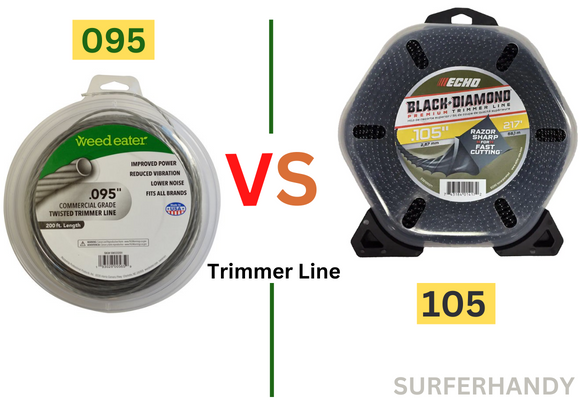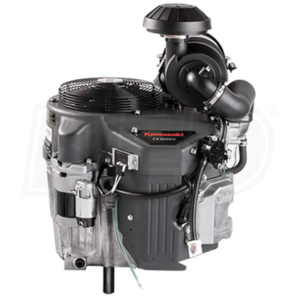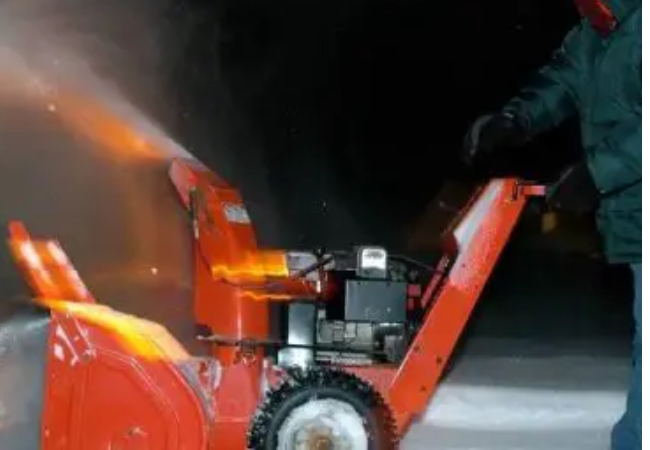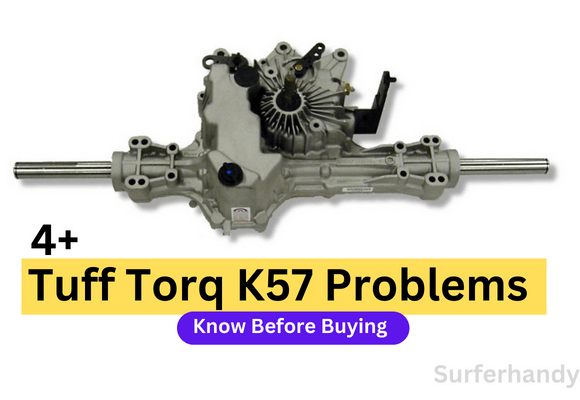A lawnmower is (often) ready to use right out of the box, but there are some unique circumstances that can call for some modest adjustments.
Everybody is familiar with the fact that a lawn mower’s basic purpose is to tidy up the garden so the spinning speed of its blades is an important factor to consider.
People are usually wondering what to do if the lawn mower blade not spinning fast.
The reason for the slow spinning of blades could be a fault in the deck belt, deck belt engine, blade clutch, and safety switch. If there is no technical fault exists in your mower’s blades then you can make just simple adjustments to increase the spinning speed.
Some mowers allow manual adjustment of the spin speed of the blades, while others come standard with this feature.
The process involves calibrating pulleys, gears, or belts. The majority of manufacturers advise against it, and if you do it, your warranty can be voided. For information, consult your user guide.
Here we will discover in depth the reasons and a few tips which must be helpful for your lawnmower’s blades maintenance.
Reasons Why Lawn Mower Blade Not Spinning Fast
There are a few different reasons to consider which can decrease the speed of your mower’s blades. Let’s explore them one by one;
Deck Belt
After engaging the blade settings on your mower, if the blades will not spin or spin at a slow speed, your deck belt may be damaged. Just below the operator’s seat is the deck.
This belt travels via a pulley system of idlers to spin the mower’s blades. Depending on the type of mower you have, the deck belt will have a specific layout. Place the mower on a smooth surface and lower the deck to the lowest position before inspecting the deck belt.
Remove any shields or coverings that may have accumulated to protect the deck belt system and clear away any trash or grass that may have collected above the mower deck.

After the belt is accessible, look for any wear or damage and the belt will need to be changed if it has broken.
Deck Belt Engine
If you’ve checked your mower’s deck belt and discovered no issues, but the blades still spinning slowly, check the engine to deck belt next.
The crankshaft’s spinning motion generates energy, which is transferred through this belt to power the deck belt system.
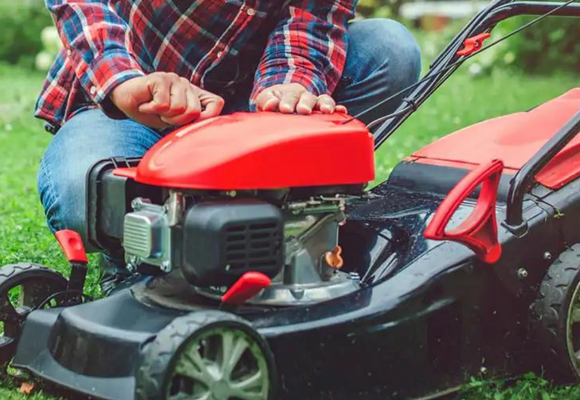
Once the proper cover has been removed, check all the belts for wear or damage. The mower’s engine will power the machine to the deck belt, which will then link to a pulley in the deck belt system.
All damaged belts must be replaced. It’s important to remove any obstructions or waste that can prevent the belts from rotating smoothly, as these belt systems can also become clogged with grass and dirt.
Blade Clutch
Certain lawnmowers come with a blade clutch. Until the user engages the controls, the blade clutch prevents the rotation of mower’s blades even though the engine is operating.
The clutch, which is connected to the crankshaft, is under the engine. When the clutch starts to revolve, a belt will be fastened to it, allowing it to power the blades.
The crankshaft will operate into the middle of the blade clutch and the clutch may eventually need to be replaced or adjusted to restore it to the proper operating condition due to wear over time.
The mower will need to be disassembled in order to diagnose a damaged clutch, and the clutch will need to be taken out for a closer look.
The clutch has to be changed if any parts are broken or if it can no longer rotate. If a new clutch is necessary, consult your owners’ handbook for the appropriate alternative part number.
Safety Switch
The mower blades may also become immobile due to a defective safety switch. The majority of lawn tractors come with one or more safety switches that, if any of them trip, will prevent the blades from moving.
The operator’s seat, on top of the transmission, and connected to the brake or clutch is the most typical positions for safety switches.
When the mower is in Reverse or Neutral, the brake is pressed, or there is no load on the seat, all of these safety switches disable the blade clutch to stop the blade’s movement.
Once all other potential problems have been ruled out and your mower’s blades still won’t turn, check the power cables in the safety switches to make sure they aren’t tripping unnecessarily.
Never turn off these switches; they are available to protect the operator and anybody nearby while the machine is in use.
What are some ways to increase mower blade speeds?
It’s not that easy to make your mower blade spin quickly, and some manufacturers employ techniques to discourage owners from doing it. However, you can alter the blade rotation on other kinds of mowers, although it might be a little challenging.
Belt Drive Mowers and Adjustable Blade Speed
The mowers that are easiest to alter for higher blade speeds are those with belt drives and horizontal blades that are controlled by the RPM of the mower motor.
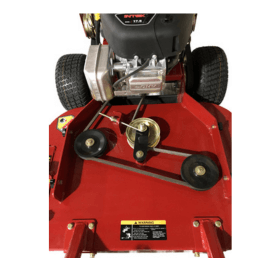
Such mowers lack the gears necessary for the engine and mowers to operate independently, thus when the engine is running, the blades cease whirling. This is the case with many vintage walk-behind mowers.
In order to increase blade speed for a gearless belt-driven lawnmower, simply increase the RPM of engine. The regulator arm and spring on your mower must be modified during this process. To produce greater or lower RPM, these two components collaborate with the mower’s carburetor.
The regulator spring’s tension affects the pull on the carburetor, which in turn affects the engine’s RPM. With a set of pliers, you can twist the section of the regulator’s arm that links to the spring to change the tension.
Move the regulator arm away from the spring to tighten the tension. The mower should run more quickly the first time you use it. If you wish to raise RPM, the opposite is true. To make the engine run more slowly, simply turn the governor’s arm in the direction of the spring.
Gear Operated Cutting System Adjustability
On walk-behind mowers with gears, you can additionally raise RPM with some manufacturers, including YBravo.
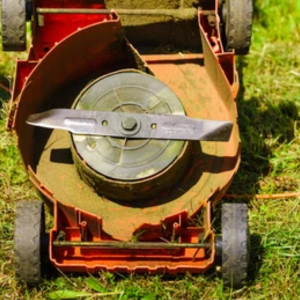
This is made possible by a device called a blade belt clutch (BBC), which enables the engine to run with the blades stationary.
Such mowers require access to the BBC cable, which is often concealed beneath a panel just above the mower deck. Just remove the bolts keeping the BBC cable in place and rearrange it to increase RPM. To accelerate the blades, pull the rope taut; to slow them down, let it slack.
Raising Blade Speed on Belt and Pulley Mowers
On riding mowers that use belts and pulleys, you can additionally increase the blade speed spin. To accomplish this, swap out your driving pulley for a larger one and a smaller blade pulley.
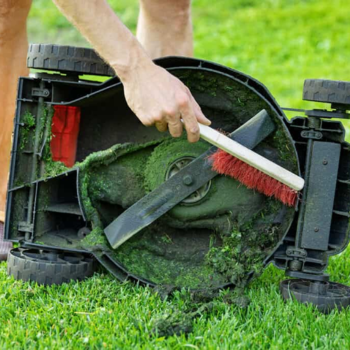
It is essential to consider that the mower’s cutting capacity may decline regardless of whether the blades may rotate more quickly.
While the blades are an essential component of cutting grass, other elements, such as the mowing deck, also affect how well a mower cuts grass. To create the greatest mower possible, each of these elements is properly balanced and well-optimized.
Bottom Line
The possible reasons for the slow spinning speed of a mower’s blades are discussed above and we have provided you with some tips in order to increase the speed.I hope now you are able to dig out the problem and resolve it by yourself.
You can consult a professional as well if you can’t find out the problem. Although it is feasible, the short-term benefits are not particularly high. Long-term use and wear and tear on your equipment make it hazardous not just for you but also for your mower.
If you really must have a faster blade speed, look for a mower with built-in alternatives. If not, you are having risk of negating your warranty or maybe hurting yourself or others.
Frequently Asked Questions
**What causes blades not to engage?**
The belt is most common reason why your blades don’t engage is that your belt is either stretched out or slack, which makes it slide around or fall off entirely. The belt may have broken as well.
**Why are lawn mower blades not razor-sharp?**
It’s a mistake to have a lawnmower blade that is razor-sharp. A blade must be extremely thin in order to be exceptionally sharp.
A very thin blade can be broken very easily. Razor edges on lawnmower blades are just not the best idea because they frequently strike various objects at high speeds.
**Does cutting wet grass dull mower blades?**
What causes blades not to engage? The belt is most common reason why your blades don’t engage is that your belt is either stretched out or slack, which makes it slide around or fall off entirely. The belt may have broken as well. Why are lawn mower blades not razor-sharp? It’s a mistake to have a lawnmower blade that is razor-sharp. A blade must be extremely thin in order to be exceptionally sharp.A very thin blade can be broken very easily. Razor edges on lawnmower blades are just not the best idea because they frequently strike various objects at high speeds. Does cutting wet grass dull mower blades?
**Why is my lawnmower spinning slowly?**
A filthy spark plug, air filter, or carburetor could be the reason, or the problem could be with the gasoline’s quality.
Failure to clean the blades might also lead to slow starting. You should be capable of regaining performance most of the time on your own.
**What happens when mower blades aren’t balanced?**
The vibration from an imbalanced blade spinning so quickly will impose strain on the blade shaft, spindle, and potentially the engine. Thus, if you wish to extend the life of your mower keep the blades balanced.
